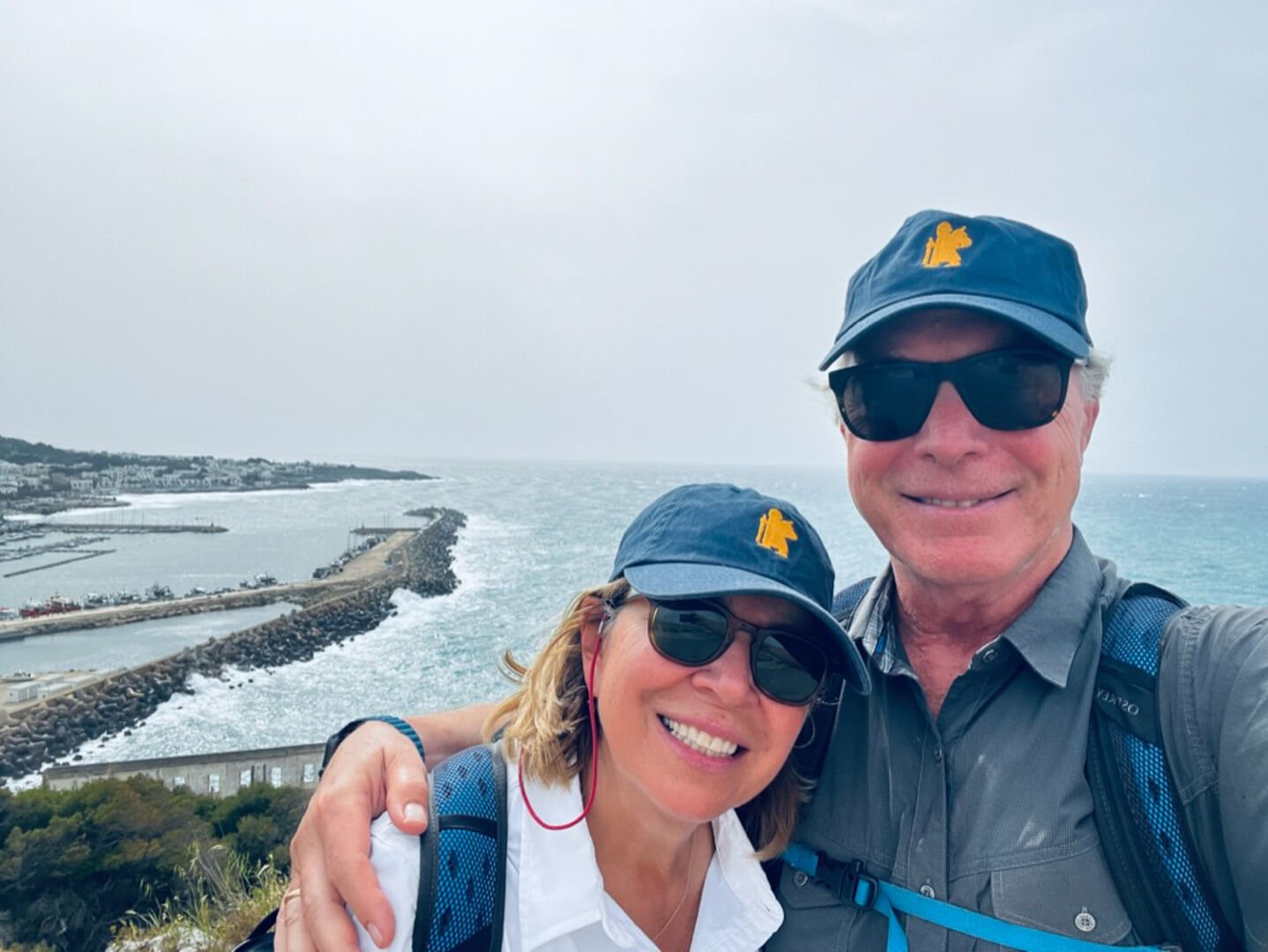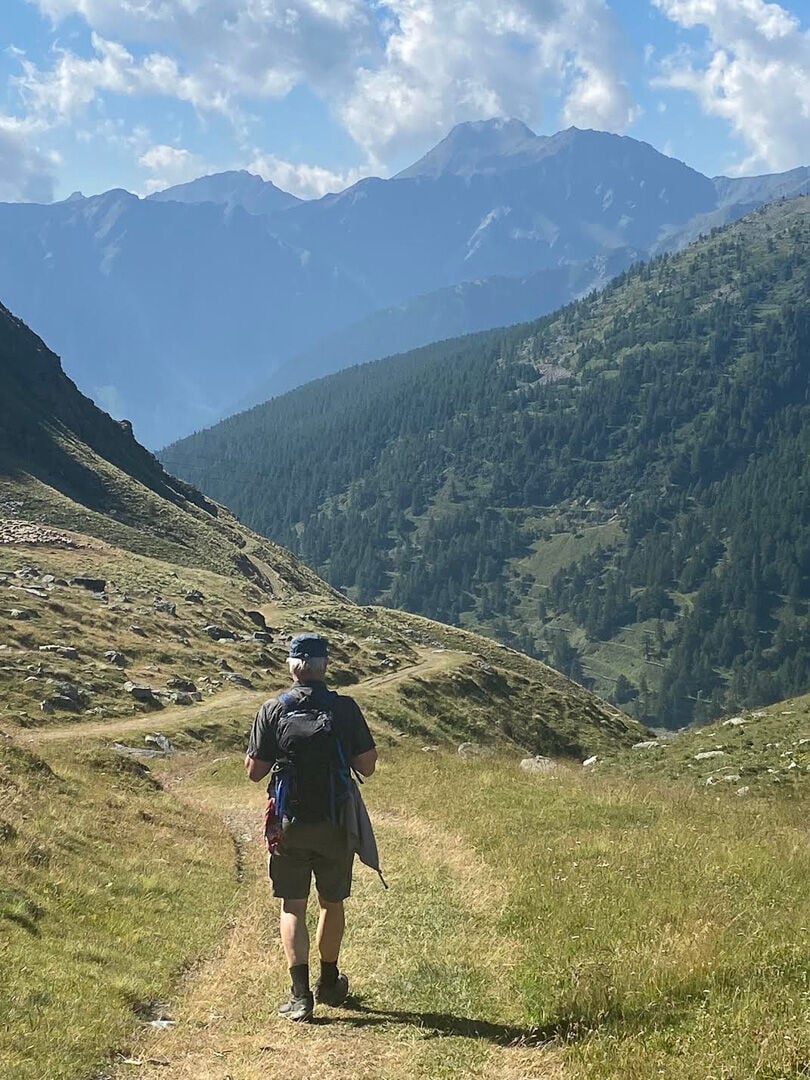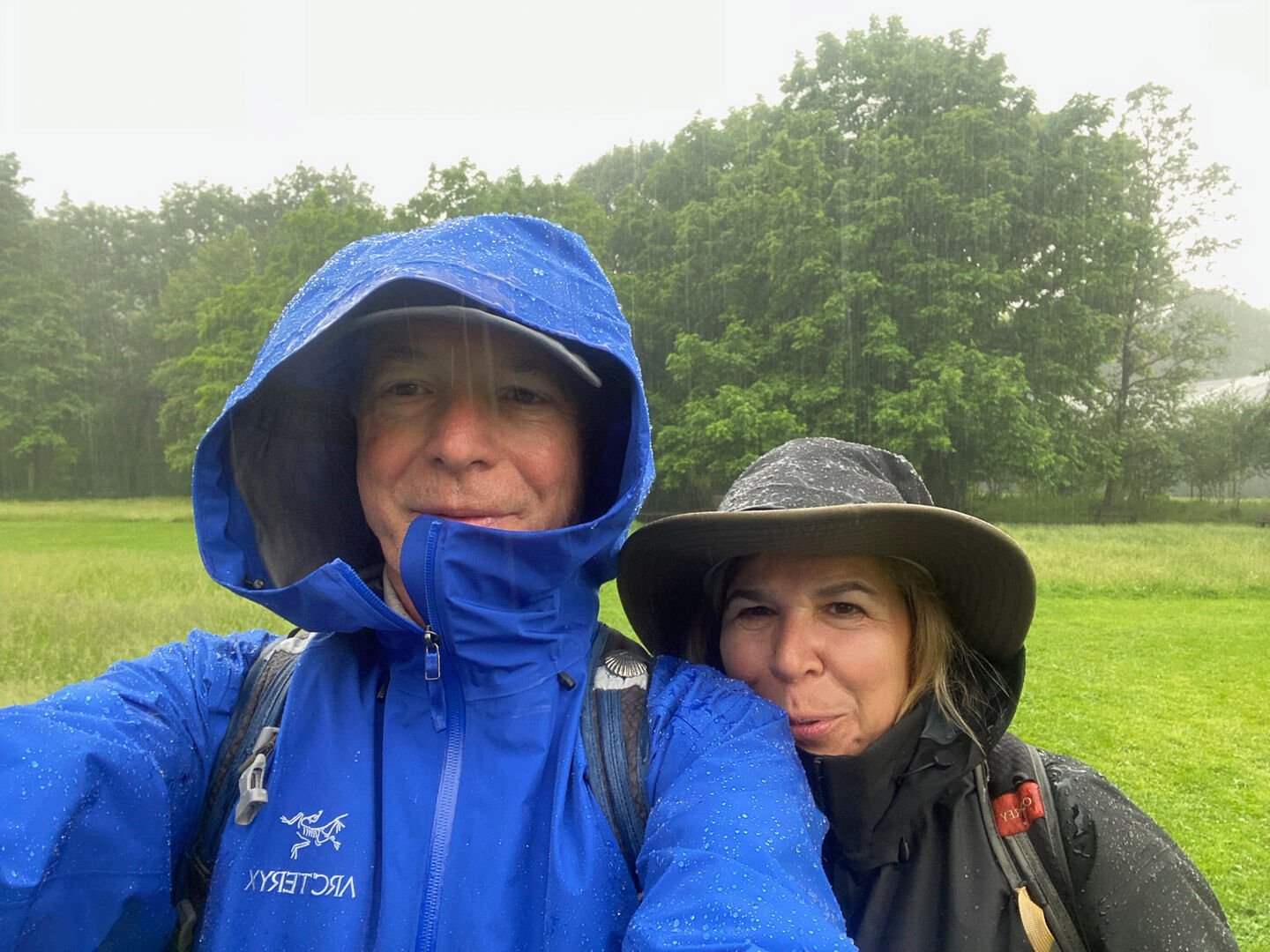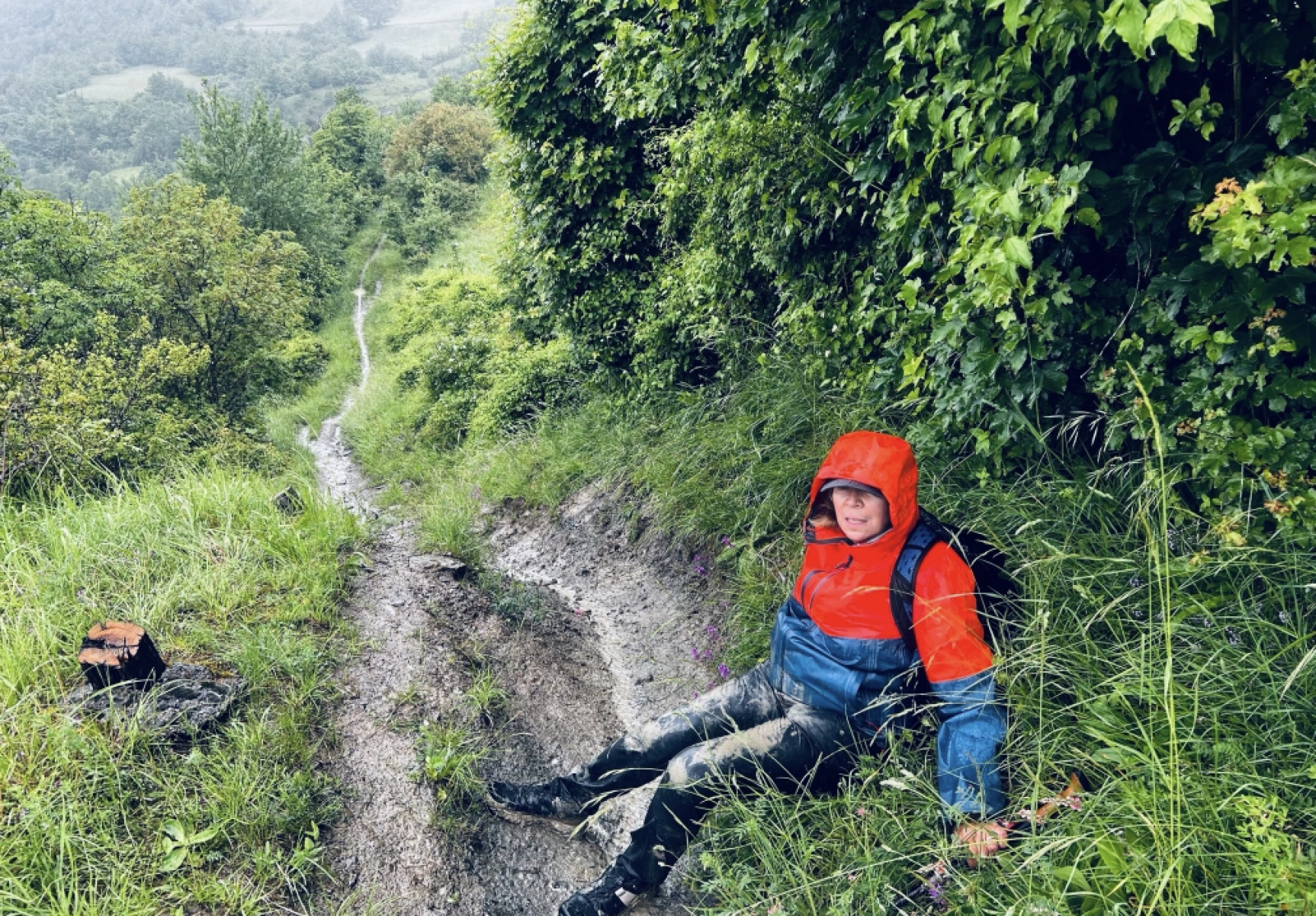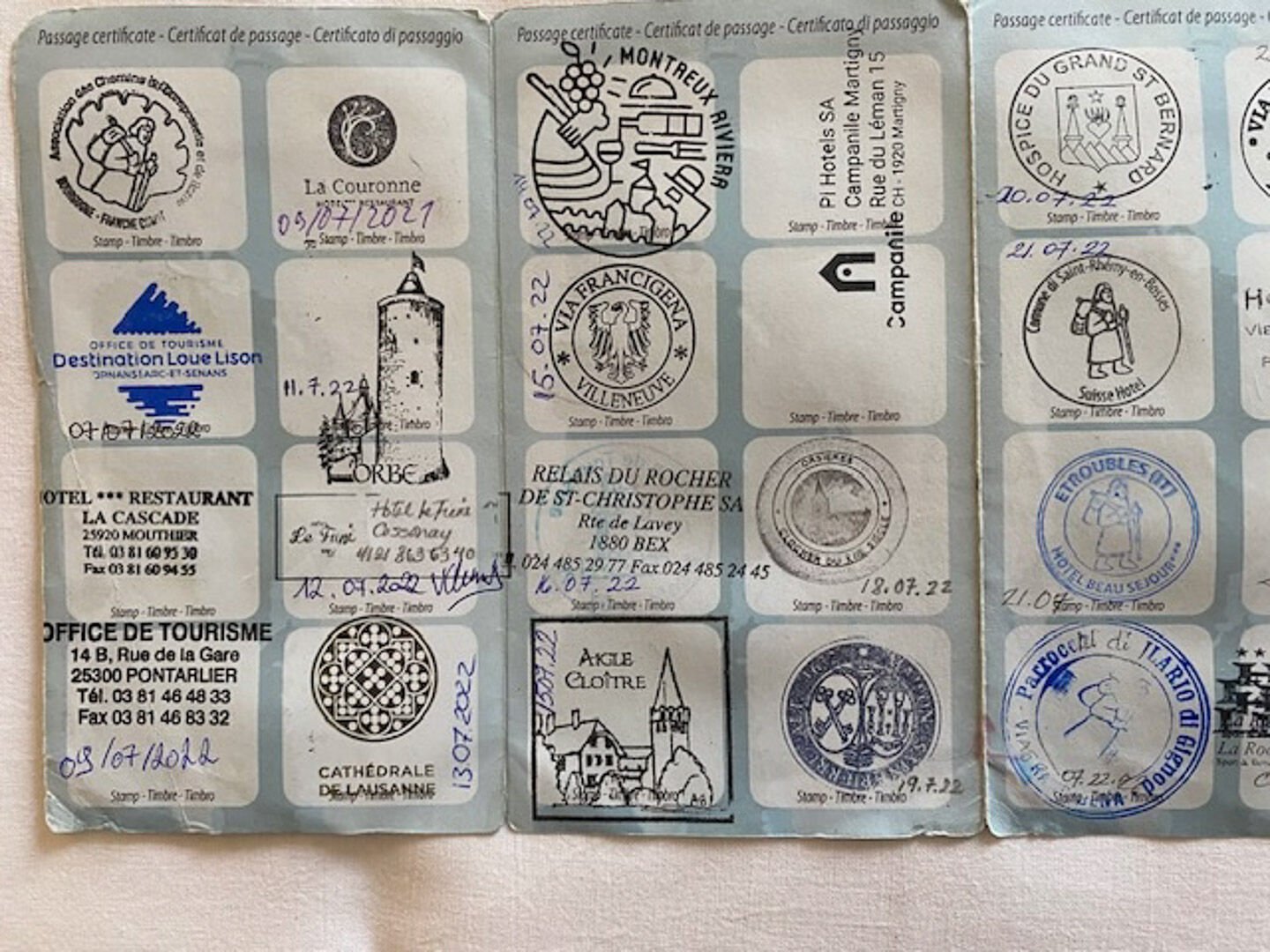Going into retirement one step at a time — Crossing three countries, mountain ranges
“Take walks.”
It’s a simple bit of health advice often shared with those on the ramp to retirement.
But there are walks — and then there are w—a—l—k—s.

walk-9g-web.jpg
Paula and Edward Hughes in Apuglia, Italy, the end of their walk.
Two and a half years ago, Edward, then 70, and Paula Hughes, 65, started walking. By the time they finished last May, they had rambled more than 1,900 miles. While they didn’t cover all that ground in one shot, the Hughes, who moved to Flint Hill in 2020, traversed much of Europe — from Canterbury, England, through France and Switzerland and ultimately down to the heel of Italy’s boot.
Specifically, they trekked the Via Francigena, a trail that, as far back as the Middle Ages, pilgrims have followed to Rome, and then continued farther south to the tip of the Italian peninsula, from where travelers would embark to the Holy Land.
It was, as Edward put it, “a leap into the unknown.”
Completely crazy or magical journey?
Not that they were ill-prepared, at least logistically. Not long after he retired as an executive with a software company in Rome, COVID hit, and Edward spent the next two years planning. The venture was Paula’s idea, a notion she had once mused on with a friend, but hadn’t realized.
Paula, a former lobbyist for the University of California who was then overseeing a business importing olive oil, spices and honey, revived the fantasy as an appropriate way to launch their retirement years. Once she confirmed to Edward that she was serious, they began mapping an experience that they couldn’t fully imagine, one unlike anything they had done before.
“Our kids thought we were completely crazy,” Paula recalled.

walk_map-v2-web.jpg
It turned out that they really didn’t know what they were getting into. Much of what they had read of the Via Francigena hike had come from walkers who tended to be more rhapsodic than revealing.
“None of them described the trail in its true form. Maybe they were blissful in their pain,” said Edward. “I can say it was a lot more difficult and challenging than we thought.”
There were days of pelting rain and mud sucking at their boots. Highways busy with double-trailer trucks, and places where the trail seemed to disappear. Steep and treacherous climbs.
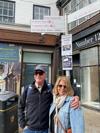
walk-9a-web.jpg
In Canterbury, England, Edward and Paula Hughes, at the beginning of their walk.
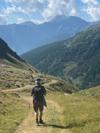
walk-9b-web.jpg
Edward Hughes hiking down from the Great St. Bernard Pass into Italy.
And there was the night in Italy when they discovered the place where they planned to stay was 15 kilometers — or more than nine miles — farther away than they thought it would be. Tired and anxious, they sat on the curb and pondered their options. They concluded that their next move should be to stick out their thumbs. At the time, Edward remembers thinking, “This is nuts.”
But one of the first cars to approach stopped, and the driver asked where they were headed. “He didn’t know who we were and this was way out of his way,” said Edward. “He was an angel from the sky.”
Similar acts of kindness, though, happened with surprising frequency, he said. “It makes you believe you’re on some magical journey.”
‘Tremendous release’
Another stroke of good fortune was the birth of a grandchild, one of five from their three daughters. That cut short what originally was going to be a four-month trek from Canterbury to Rome. Instead, the first stage of their hike ended in Aosta, in the Italian Alps. Otherwise, they would have been walking in the withering heat of an Italian summer.
“We would not have made it,” said Paula.

walk-9c-web.jpg
Edward and Paula Hughes after a day of heavy rain around Arras, France.
Edward’s planning had called for them to cover roughly 12 to 20 miles per day, but otherwise they proceeded with no other purpose. Only the walk mattered.
“That really was a tremendous release from the world,” he said.
It certainly helped that Edward speaks conversational French and fluent Italian. He was raised in Italy while his father was stationed at the United States Embassy in Rome. Paula also can converse in Italian.
They also literally lightened their load by hiring a service that transported their luggage to each next stop. Edward said they usually carried eight to 10 pounds each in their backpacks — three liters of water, lunch, rain gear, batteries, first aid kit and a change of clothes. They needed the batteries because they were using GPS all day.
At the start of the final stage of their journey, Edward wrote in their online blog: “We will take each step as an achievement on its own merits. At the end of each day we have earned the privilege of doing it again in the morning. The changing weather, the random animal sounds, the crunch of our steps on gravel, the rustle of wind blown leaves will be our companions. We will never be alone.”
That said, they also passed the time listening to audiobooks and podcasts together, with Edward listening through one ear pod and Paula the other. One of the most frequent questions they’ve been asked is whether they fought along the way. They didn’t, said Paula. People also wanted to know if they lost weight. They did.
Lessons learned
Along the way, there were lessons learned. Wrote Paula: “Shouting NO to gravity does not work, so if you are sliding down a hill of mud, enjoy the ride. We did not always know where we were, but we knew where we wanted to be. Stuff newspapers into wet boots. Look for water in cemeteries. In Italy, a church bell tower means a cafe/bar is nearby.”
She also made a point of collecting ceramic shards she spotted, wedged in the ground along the trail. Paula admits that what started innocently became a bit of an obsession. “I would stop and pry pieces of interest out of the soil,” she said, adding that she was “overwhelmed by the opportunities for souvenirs” as they walked through Carrara, the town in Tuscany famous for its white marble.
At night, she would empty her pockets and review her latest finds. Her ceramic cache might seem like so much broken and forgotten junk, but she knew it would always remind her of the ground they covered, and the time when their lives were shaped solely by a sense of place. Paula estimates that she came home with hundreds of shards, and one day may pass them on to her granddaughter, Isla, who she described as a puzzle prodigy.

walk-d.png
Edward Hughes resting along a muddy trail in the Apennine Mountains in Italy.
Just as meaningful were the stamps they received on their “pilgrim passports” when they passed through a new town. These are documents available to people walking the Via Francigena.
At the end of the day, the Hughes would go to the local church or tourist office to get the stamp for that town where they were spending the night. Overall, they collected 148 stamps, many which can be very ornate.
“You know, you’re tired and whatever, but getting that stamp was like an infusion,” said Paula. “You know, you go into a civic center or a city hall or a church to get your stamp and they were so encouraging. Maybe you haven’t seen anyone all day and then you get that stamp and it’s like, ‘Okay, I’m good for tomorrow.’”
Ultimately, they would walk in four countries, cross three of them and navigate three mountain ranges, including the Apennine Mountains in Italy twice. Through it all, as Paula wrote, they “experienced the joy of the ordinary, and the thrill of accidental discoveries. These were our regular rewards.”
The final stamp
Their walk into retirement ended last May 16 when they reached the terminus of stage three at Santa Maria di Leuca in the southeastern tip of Italy. Fittingly, it offered its own unique sense of place. To their left was the Adriatic Sea and the hills of Albania on the horizon across the water. To their right were the crashing waves of the Ionian Sea.

walk-9h-web.jpg
Some of the 148 stamps the couple received on their “pilgrim passport.”
By now, hiking more than 12 miles a day was a breeze. At the beginning, Edward said, that would have pushed them to the limit. They had learned much about their ability to persevere through awful weather, vertical trails and end-of-the-day setbacks. But maybe the most valuable lesson was, as Edward noted, was to “empty the mind and be grateful for every step.”
They received their final stamp from a Sister Fara, who pointed out that she was not to be confused with Farrah Fawcett. She provided a “meticulously designed” stamp that verified that they had finished the last leg of the Via Francigena.
“And that was that,” wrote Edward. “Now go out and do something crazy. Ciao”
You can see the full blog of the walk at ildolcefarnientes.com.
Sign up for Rapp News Daily, a free newsletter delivered to your email inbox every morning.


